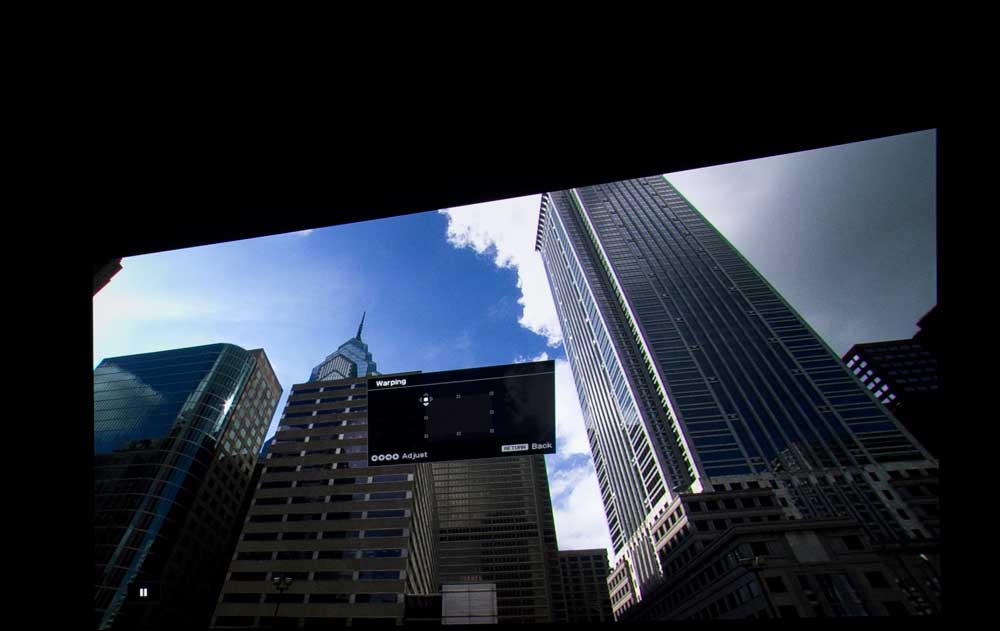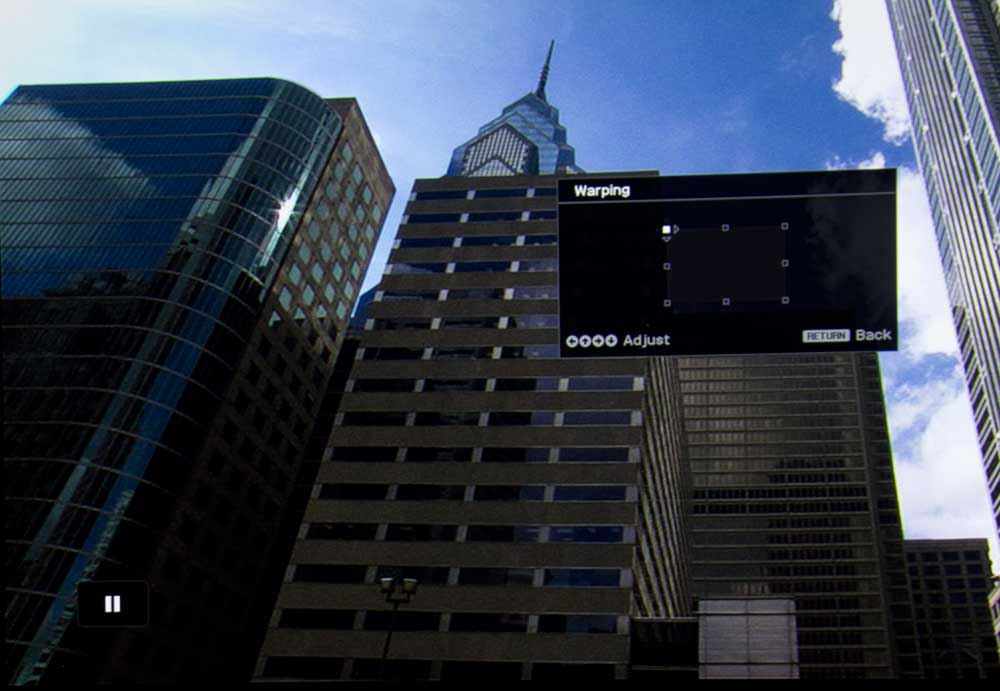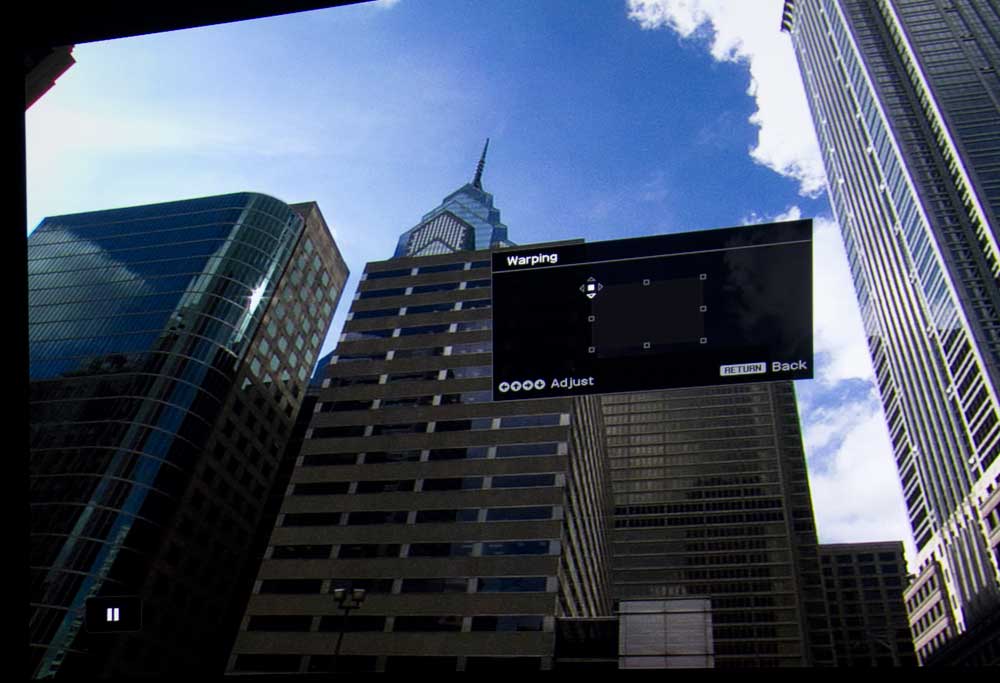FHZ65 Networking
The Sony FHZ65 supports plenty of advanced networking features. In large part this is accomplished by supporting the major industry players feature sets and other standards. Those include Crestron's RoomView, AMX's Device Discovery, SNMP and more. Depending on what you choose, you'll have push notifications, browser monitoring, command and control of the projector via browser, and much more. This is the purview of IT teams.
We are not networking specialists nor do we have the ability to test compatibility in a large network environment. That's why we put faith in a projector adhering to RoomView or other similar protocols. Part of supporting those environments is one way to be assured of delivering many of those advanced features like push notifications. If it's RoomView compatible, in a RoomView supported network, all those RoomView features should be available.
The FHZ65, however, does not directly support wireless networking. Sony suggests, since this is typically an installed projector, that the projector can be tied to a router, via HDBaseT, and use the router to send over cable, the originally wireless info. That said, for some rental and staging applications, and some environments were wireless is preferred, it would have been nice to also have Wifi built in. Wireless HDMI can be accomplished easily with outboard units.
FHZ65 Supports HDBT
For those not familiar HDBT (aka HDBaseT), is a standard rolled out a few years back that allows HDMI to be run extremely long lengths over low cost CAT5e, CAT6, etc., cabling - the same stuff used for local area networking.
Typically HDMI is limited to a dozen or so meters of length, without getting into various boosters, and other schemes such as fibre optic. As HDMI cable is very expensive (and fibre also), HDBT solves several problems: Cost, ease of running the cable - CAT cable is thin - and in some cases, locations already have CAT cable in place, saving the need to do fresh wiring. It's also very handy for rental and staging operations, where setup often includes some unknowns, and therefore knowing that a spool of CAT cable will save the day, is very assuring.
HDBT officially will allow CAT runs of up to 328 feet (100 meters). That said, however, there are ways to boost that as well, to far greater distances.
[sam_pro id=1_107 codes="true"]
FHZ65 Lens Options
Sony offers a standard lens, and e four optional lenses, with one more coming out next year. A single button release bayonet system allows lenses to be changed out in seconds. We remove and reinstall a lens in the FHZ65 hardware tour video, if you want a quick look.
The optional lenses are $2250 list price each. a fixed wide angle, A wide angle manual zoom, and a long, and a very long telephoto zoom. The chart on our hardware page will provide more info.
The one additional lens coming out Q1 2016 is an ultra short throw lens, for rear screen, and also wall mounting type applications. There is no confirmed price for that lens. I do believe it will be the first "interchangeable" ultra short throw lens available for a 3LCD projector.
For those lenses that are motorized, zoom, focus and lens shift are powered.
FHZ65 Edge Blending, Color Matching, Constant Brightness...
There are multiple components and capabilities that come into play when you want to use multiple projectors to work together to create a seamless image.
The Sony has these abilities: Term by term:
Edge blending - putting one image across two or more projectors, aligning he images so that you have an unbroken, seamless image.
[sam_pro id=1_126 codes="true"]
Color matching and brightness matching - without these two capabilities this Sony wouldn't be able make the image appear seamless, because color and / or brightness would vary from one projector to the next, perhaps one quadrant to the next in a four projector Edge Blending. If one projector's picture is redder, or brighter than another, it's going to be pretty visible.
Warping - bending the image so that it can be matched for off angle projecting, or projecting across more than one wall, wall and ceiling, etc.
Constant Brightness - it's not just enough to start out with all the projectors being blended, but also staying that way, so that color and brightness, and everything else maintains the quality over long periods of time and usage. With Constant Brightness engaged, the projector starts out at less than full brightness, but since the laser light engine dims very slowly, this allows all the projectors in an edge blending or other environment to be the same brightness, and hold it for potentially years. This could be of benefit even for a single projector in some special applications.
Laser light engines, being very long life and losing brightness very slowly over a long period of time,and doing so with minimal color shift (I'm told), give laser projectors like this Sony a big advantage in edge blending setups, over relatively short lived, steadily changing lamps, which do shift color, a visible amount even after only hundreds of hours.
Sony VPL-FHZ65 Laser Projector is energy efficient
For starters, like most projectors these days, there are a number of features, including timers, network features that will power down the projector based on certain times or events, power down when there's no active signal, etc.
But I'm talking energy savings due to the laser light engine. For openers, this is a 3LCD projector, and they are, in general a good deal less power hungry than competing DLP projectors that claim similar white lumens (but lower color lumens). That difference is typically 20% to over 30% energy savings, more if you are comparing brightness based on color lumens.
But when it comes to laser light engines, they are more efficient than lamps. It's not a huge amount, but here is a good comparison.
Sony's 6000 lumen FHZ65 claims a maximum power draw, at full power, of 509 watts (110-120V). By comparison, I looked up the also 6000 lumen Epson G6900 specs (we reviewed it last year). The Epson is lamp based, (both claim 6000 lumens, although the Epson measured a few percent less). The Epson's power consumption is rated at 568 lumens according to them, but even that is 10% more.
To compare against a single chip DLP projector, I looked up a BenQ SP920P, also rated 6000 lumens. That DLP projector claims power consumption at 760 watts at 110-120V, which is almost 50% more than the Sony laser projector, and not at all surprising, as DLP projectors overall, are definitely not as energy efficient as 3LCD projectors.
Also, if you don't need the full power of the Sony's brightness, in fact when there are times when you need very little brightness, the Sony brightness can be set in increments of about 1%. If you only needed, at times, 1500 lumens, the Sony would draw far less power than the others, which can't dim that far down. You could even drop down well below 500 lumens, if needed, which should drastically reduce energy consumption.
Tilt Angle of Projector
As is the case with some laser, and LED projectors (but not all) -- we're talking solid state projectors -- this Sony can be tilted to almost any angle during operation. While that is not typically required for normal usage for presentations, there are specialty situations, including museum displays, large houses of worship (aka churches), concert venues, etc., where that capability makes for a better installation, or in some cases makes an installation possible, where lamp based projectors dare not operate.
The ability to operate at unusual angles is in part due to the relative ease of keeping a solid state light engine running cool. Lamps have their own issues, making ventilation for non standard operation more challenging.
Sony VPL-FHZ65 Warranty
Sony's warranty on the FHZ65 projector is 5 years parts and labor, or 12,000 hours use. That covers the laser light engine as well, which Sony rates at 20,000 hours life. All considered, that's a great warranty, although it does work out to less than two full years in a 24/7 type operation, but, that's fair, considering most applications only run a projector for a few hours a day. At 8 hours a day, five days a week, 12,000 hours would work out to eight years of warranty coverage, if not for the five year cap.
Sony provides a first year loaner program. Sony also offers extensions of the loaner program to either 3 years or five years.





